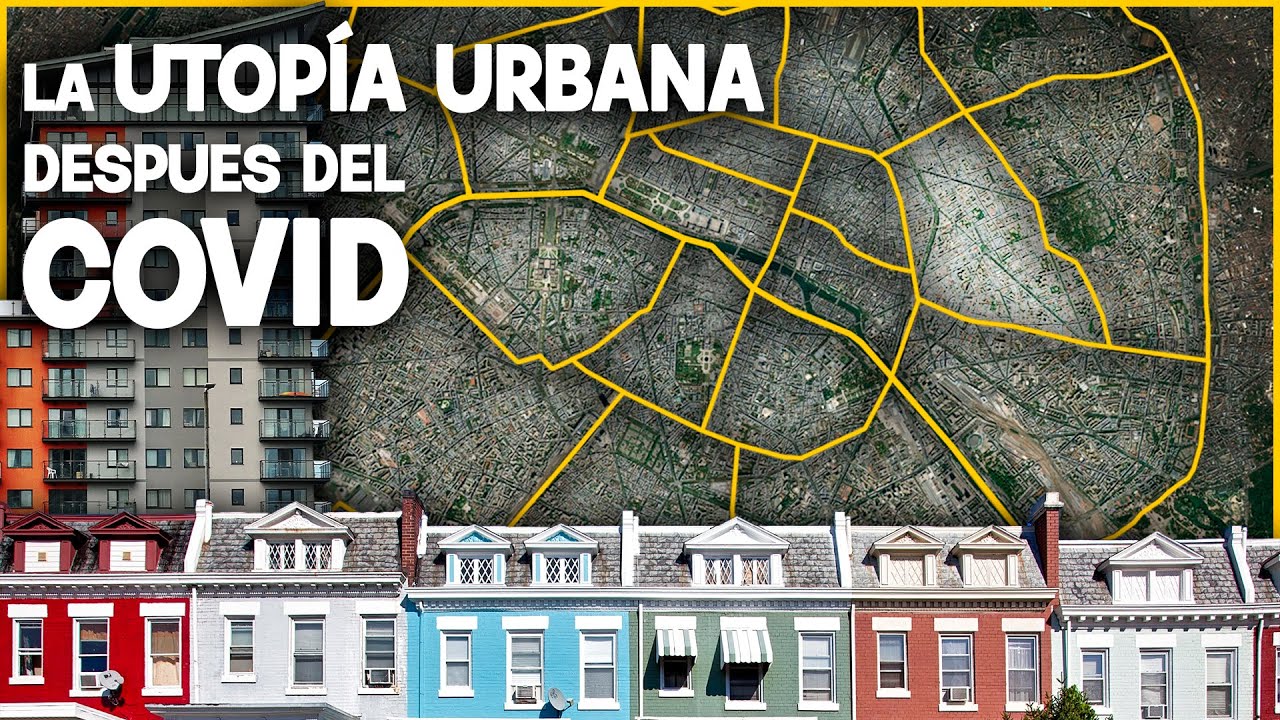Is 15-Minute City the Future of Urban Living?
Summary
TLDRThe 15-minute City concept envisions a future where residents have all necessities within a 15-minute walk or bike ride from their homes. It promotes a dense yet diverse community, reducing reliance on cars and fostering a sense of belonging. Built on seven principles, it enhances social connections, boosts local economies, and reduces environmental impact. Cities like Paris, Melbourne, and Portland are implementing this model, aiming to reshape urban life post-pandemic.
Takeaways
- 🚲 The 15-minute City concept envisions a world where residents have everything they need within a 15-minute walk or bike ride from their homes.
- 🌿 It aims to reconfigure urban life to be more accessible, convenient, and sustainable by reducing reliance on cars.
- 🏗️ The concept was originally proposed by Professor Carlos Moreno in 2016 and gained traction during the COVID-19 pandemic.
- 🏙️ It promotes vibrant neighborhoods with mixed-use development, where residential, commercial, and recreational spaces coexist.
- 🔑 The 15-minute City is built on seven key principles: proximity, density, diversity, digitalization, human scale design, flexibility, and connectivity.
- 🌐 It offers social, economic, and environmental benefits by fostering community, reducing transportation costs, and curbing emissions.
- 🌳 Urban planning and design are central to the 15-minute City, emphasizing walkable streets, bike lanes, and efficient public transit.
- 🏡 Housing affordability is addressed through diverse housing options, promoting comfort without sacrificing community or social cohesion.
- 🌱 Environmental sustainability is a key focus, with reduced car usage leading to lower emissions and a greener planet.
- 🌐 The concept has been implemented in cities like Paris, Melbourne, Portland, and Seoul, each adapting it to their unique urban contexts.
- 🔍 While the 15-minute City faces critiques and challenges, it offers a compelling vision for sustainable and livable urban communities.
Q & A
What is the core concept of the 15-minute City?
-The 15-minute City is an urban planning concept where residents have everything they need within a 15-minute walk or bike ride from their homes, including essential services like jobs, shops, healthcare, and schools.
Who originally proposed the concept of the 15-minute City?
-The concept of the 15-minute City was originally proposed by Professor Carlos Moreno in 2016.
How did the 15-minute City concept gain traction?
-The concept of the 15-minute City really took off during the COVID-19 pandemic as cities saw it as a way to reshape urban life post-pandemic.
What are the seven key principles of the 15-minute City?
-The seven key principles of the 15-minute City are: proximity, density, diversity, digitalization, human scale design, flexibility, and connectivity.
How does the 15-minute City aim to benefit society?
-The 15-minute City aims to benefit society by fostering a strong sense of community, improving access to amenities, promoting housing affordability, and encouraging diverse interactions.
What economic benefits does the 15-minute City offer?
-The 15-minute City offers economic benefits by reducing transportation costs, supporting local businesses, and boosting overall efficiency.
How does the 15-minute City contribute to environmental sustainability?
-The 15-minute City contributes to environmental sustainability by curbing emissions through reduced car dependency and urban sprawl, contributing to a greener and more sustainable planet.
What role does urban planning and design play in the 15-minute City?
-Urban planning and design are the backbone of the 15-minute City, embracing mixed-use development where residential, commercial, and recreational spaces coexist harmoniously.
How does accessibility contribute to the success of the 15-minute City?
-Accessibility is key to the success of the 15-minute City, with seamless and reliable public transportation enabling residents to move around the city efficiently.
What are some examples of cities implementing the 15-minute City concept?
-Cities like Paris, Melbourne, Portland, and Seoul are implementing the 15-minute City concept by pedestrianizing areas, encouraging cycling, creating 20-minute neighborhoods, and developing networks of complete neighborhoods.
What are some of the challenges faced by the 15-minute City concept?
-The 15-minute City faces critiques and challenges such as whether design changes alone can solve complex urban issues, the need for a one-size-fits-all approach, and addressing concerns like affordability, inclusivity, and sustainability.
Outlines

このセクションは有料ユーザー限定です。 アクセスするには、アップグレードをお願いします。
今すぐアップグレードMindmap

このセクションは有料ユーザー限定です。 アクセスするには、アップグレードをお願いします。
今すぐアップグレードKeywords

このセクションは有料ユーザー限定です。 アクセスするには、アップグレードをお願いします。
今すぐアップグレードHighlights

このセクションは有料ユーザー限定です。 アクセスするには、アップグレードをお願いします。
今すぐアップグレードTranscripts

このセクションは有料ユーザー限定です。 アクセスするには、アップグレードをお願いします。
今すぐアップグレード関連動画をさらに表示

15-Minute City: Urban Planning Solution To Climate Change | CNA Correspondent

¿Son Las CIUDADES DE 15 MINUTOS De Verdad Una Buena Idea? || Urbanópolis

[EXPLAINER] Will Manila become a 15-minute city?

NYC and the 15-minute city concept

English - Daily routine (A1-A2)

the anti-15-minute-city backlash is ridiculous
5.0 / 5 (0 votes)
